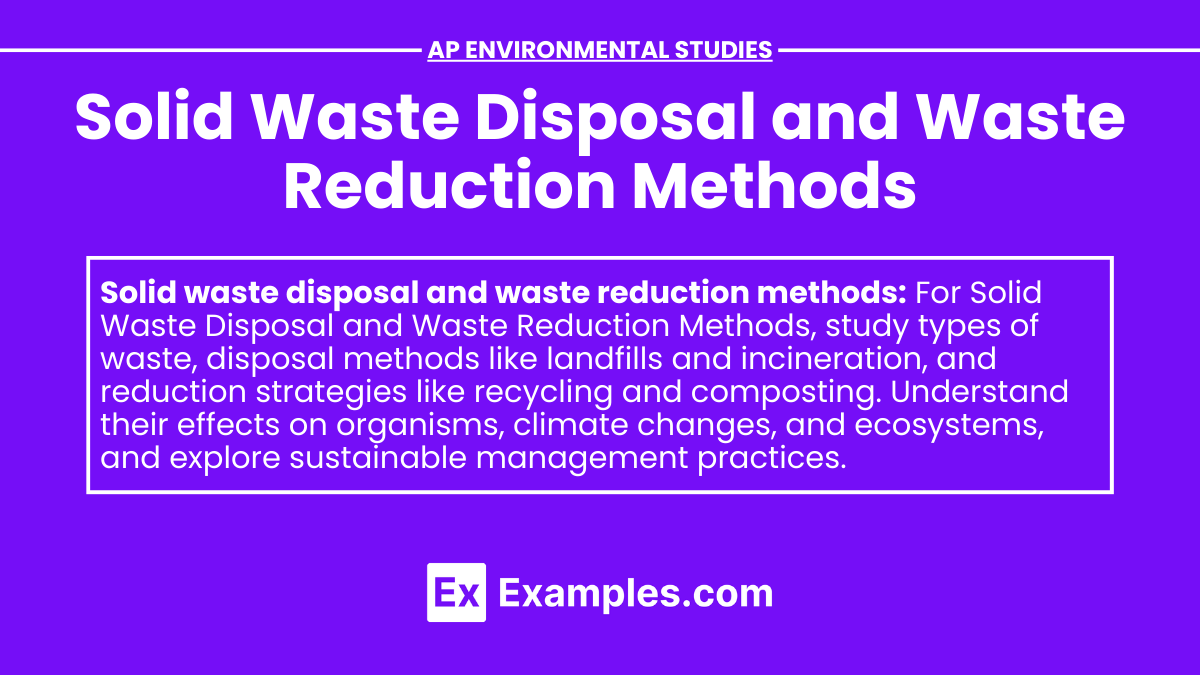Solid waste disposal and waste reduction methods are vital topics in AP Environmental Science, focusing on how waste management impacts ecology, ecosystems, biodiversity, and the biosphere. Proper disposal methods, such as landfills and incineration, alongside reduction strategies like recycling and composting, are essential for minimizing environmental damage. These practices help maintain ecological balance, protect biodiversity, and ensure the health of the biosphere, highlighting the importance of sustainable waste management.
Learning Objectives
By studying solid waste disposal and waste reduction methods, students will understand how waste management affects organisms, including flora and fauna, and contributes to climate changes. Learning objectives include evaluating disposal methods, exploring reduction strategies like recycling and composting, and analyzing their impacts on ecosystems. Students will also learn how effective waste management can mitigate adverse effects on the environment, helping to preserve biodiversity and protect all living organisms from pollution and habitat destruction.
Types of Solid Waste
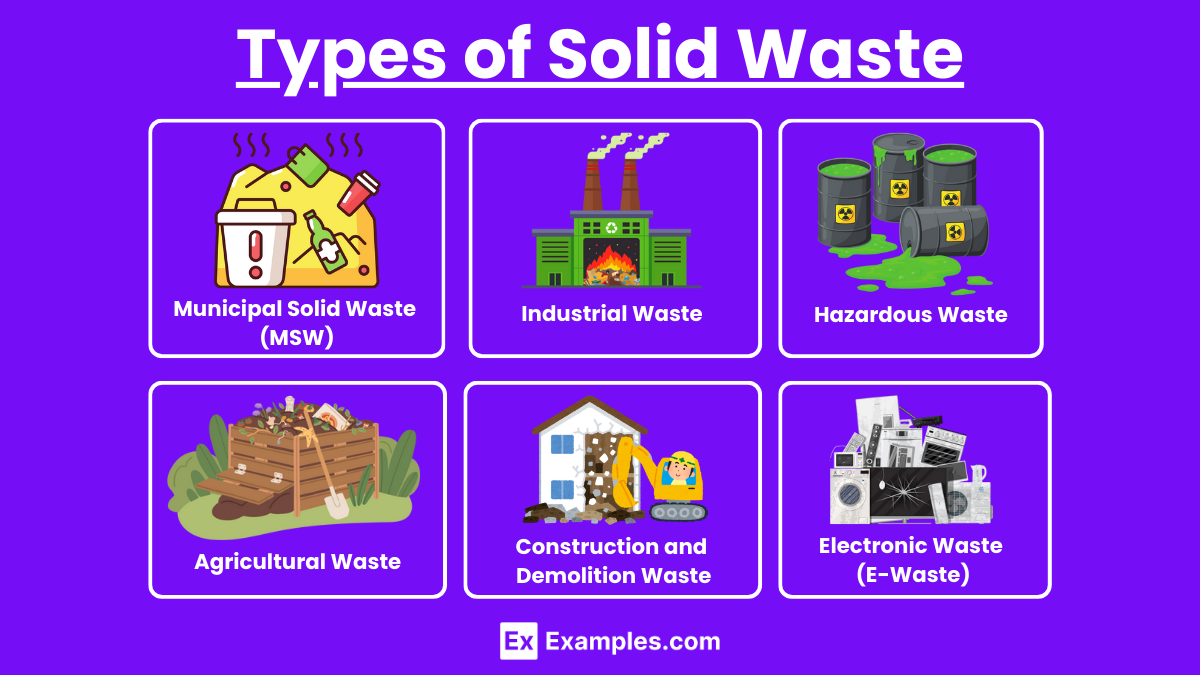
- Municipal Solid Waste (MSW)
- Household garbage, food scraps, paper, plastics, glass, and metals.
- Industrial Waste
- Byproducts from manufacturing and industrial processes.
- Hazardous Waste
- Toxic, reactive, ignitable, and corrosive materials.
- Agricultural Waste
- Manure, crop residues, and pesticides.
- Construction and Demolition Waste
- Debris from building and demolition activities.
- Electronic Waste (E-Waste)
- Discarded electronic devices like computers, TVs, and phones.
Solid Waste Disposal Methods
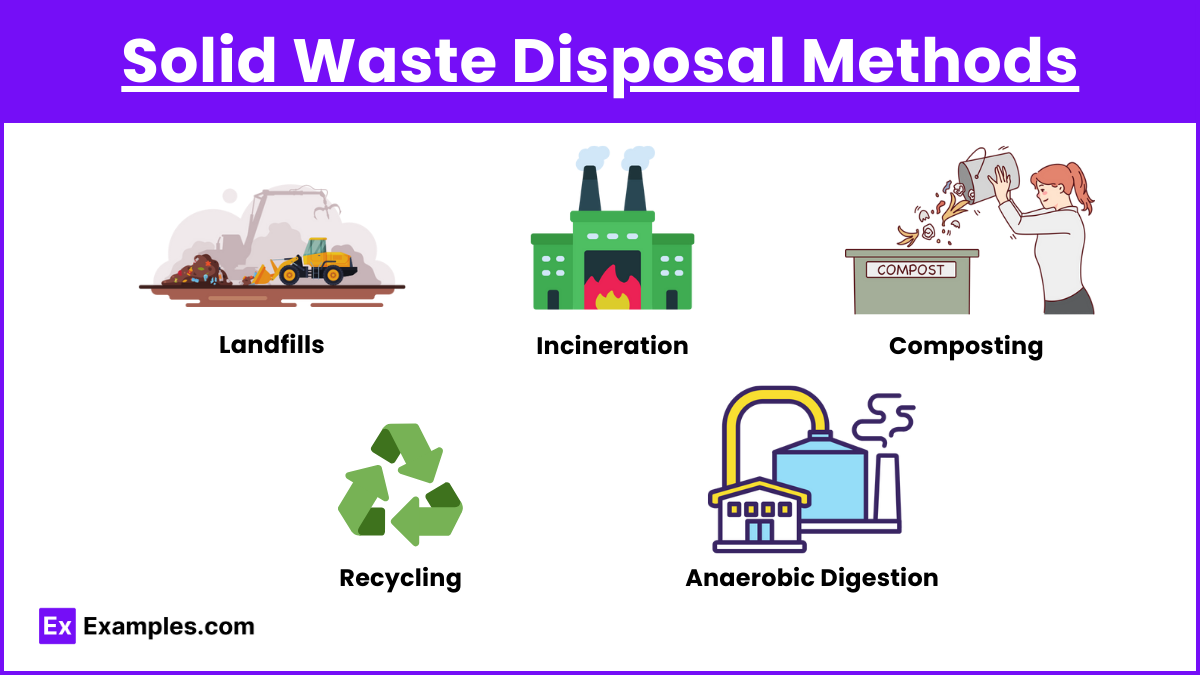
Landfills
Description:
Sites designated for waste disposal, where waste is buried.
Advantages:
- Economical for large volumes of waste.
- Can be engineered to minimize environmental impact.
Disadvantages:
- Produces methane, a potent greenhouse gas.
- Potential for groundwater contamination.
- Requires large land areas.
Incineration
Description:
Burning waste at high temperatures to reduce its volume and produce energy.
Advantages:
- Reduces waste volume significantly.
- Can generate electricity and heat.
Disadvantages:
- Emission of pollutants like dioxins and furans.
- High operational costs.
- Ash residue may be hazardous.
Composting
Description:
Biological decomposition of organic waste into humus-like material.
Advantages:
- Produces nutrient-rich compost for soil amendment.
- Reduces organic waste in landfills.
Disadvantages:
- Requires time and space.
- Can produce odors if not managed properly.
Recycling
Description:
Process of converting waste materials into new products.
Advantages:
- Conserves natural resources.
- Reduces energy consumption and greenhouse gas emissions.
Disadvantages:
- Requires separation and cleaning of materials.
- Market demand for recycled products can fluctuate.
Anaerobic Digestion
Description:
Microbial breakdown of organic waste in the absence of oxygen, producing biogas.
Advantages:
- Generates renewable energy (biogas).
- Reduces waste volume and produces nutrient-rich digestate.
Disadvantages:
- Initial setup costs can be high.
- Requires management of biogas emissions.
Waste Reduction Methods
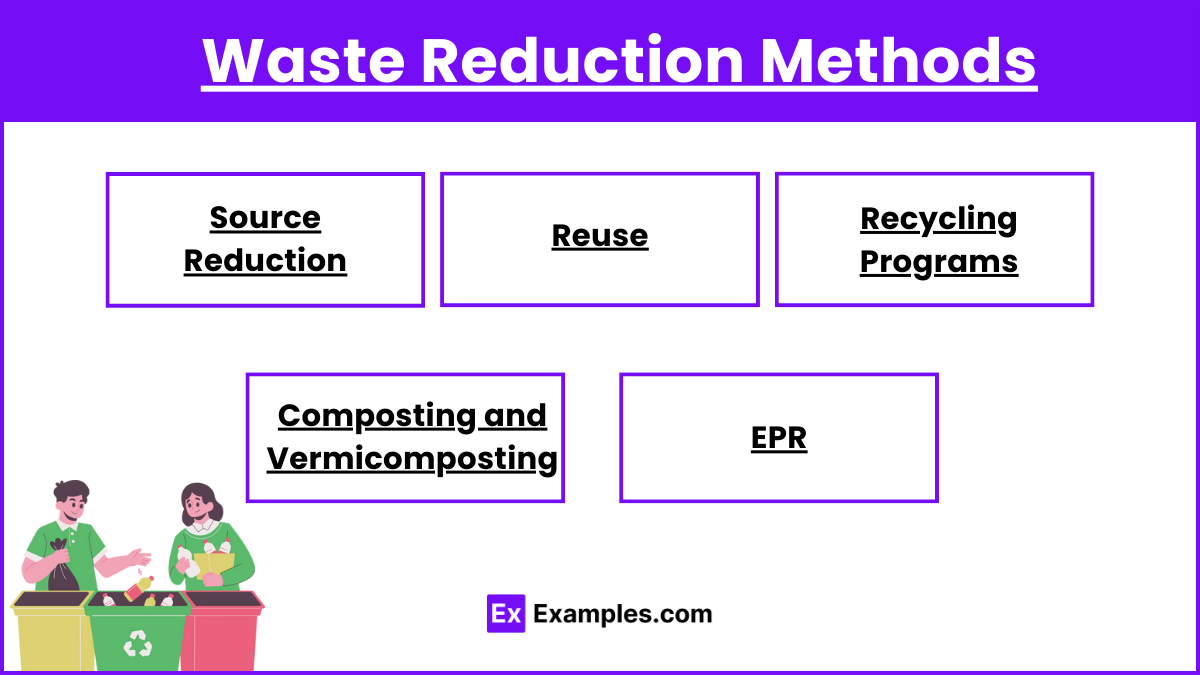
Source Reduction
Description:
Minimizing waste generation at the source by altering production processes, using fewer materials, and increasing product lifespan.
Advantages:
- Reduces the overall volume of waste.
- Can save costs in material and disposal.
Disadvantages:
- Requires changes in manufacturing and consumer behavior.
Reuse
Description:
Using items multiple times before discarding or recycling them.
Advantages:
- Extends the life of products.
- Reduces demand for new materials and energy.
Disadvantages:
- Items may require cleaning or repair.
- Limited by the durability of products.
Recycling Programs
Description:
Community and municipal initiatives to collect and process recyclables.
Advantages:
- Diverts waste from landfills and incinerators.
- Promotes environmental awareness.
Disadvantages:
- Requires public participation and education.
- Collection and processing can be costly.
Composting and Vermicomposting
Description:
Home or community composting of organic waste, including using worms (vermicomposting).
Advantages:
- Reduces organic waste in landfills.
- Produces valuable compost for gardening and agriculture.
Disadvantages:
- Requires space and maintenance.
- May attract pests if not managed properly.
Product Stewardship and Extended Producer Responsibility (EPR)
Description:
Manufacturers take responsibility for the entire lifecycle of their products, including end-of-life disposal.
Advantages:
- Encourages design for recyclability and durability.
- Reduces waste management costs for municipalities.
Disadvantages:
- Can increase product costs.
- Requires regulatory frameworks and enforcement.
Benefits of Waste Reduction
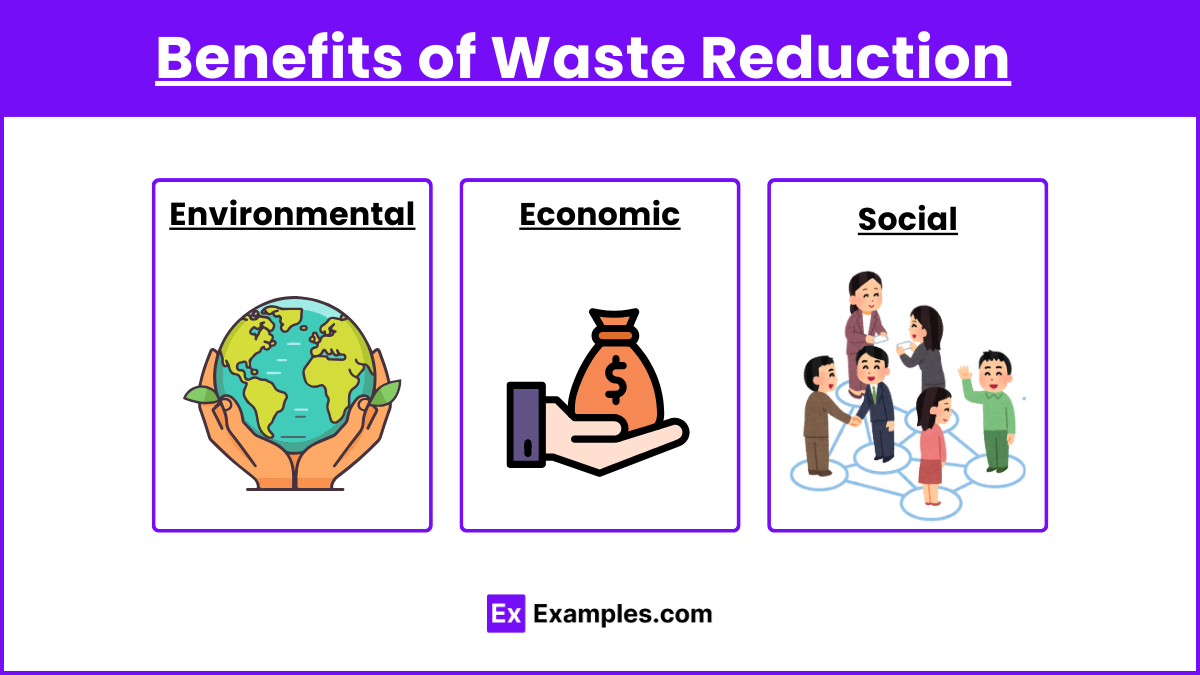
- Environmental: Reduces pollution, conserves resources, and minimizes habitat destruction.
- Economic: Lowers waste management costs, conserves raw materials, and creates jobs in recycling and composting industries.
- Social: Promotes sustainable living, reduces landfill reliance, and improves community health.
Case Studies
San Francisco Zero Waste Program
Description:
- Aiming for zero waste to landfills by 2020 through aggressive recycling, composting, and waste reduction initiatives. Successes:
- Achieved over 80% waste diversion rate.
- Strong community participation and education.
Sweden’s Waste-to-Energy Program
Description:
- Using incineration to convert waste into energy, with advanced emissions controls. Successes:
- Less than 1% of waste goes to landfills.
- Produces heat and electricity for thousands of homes.

